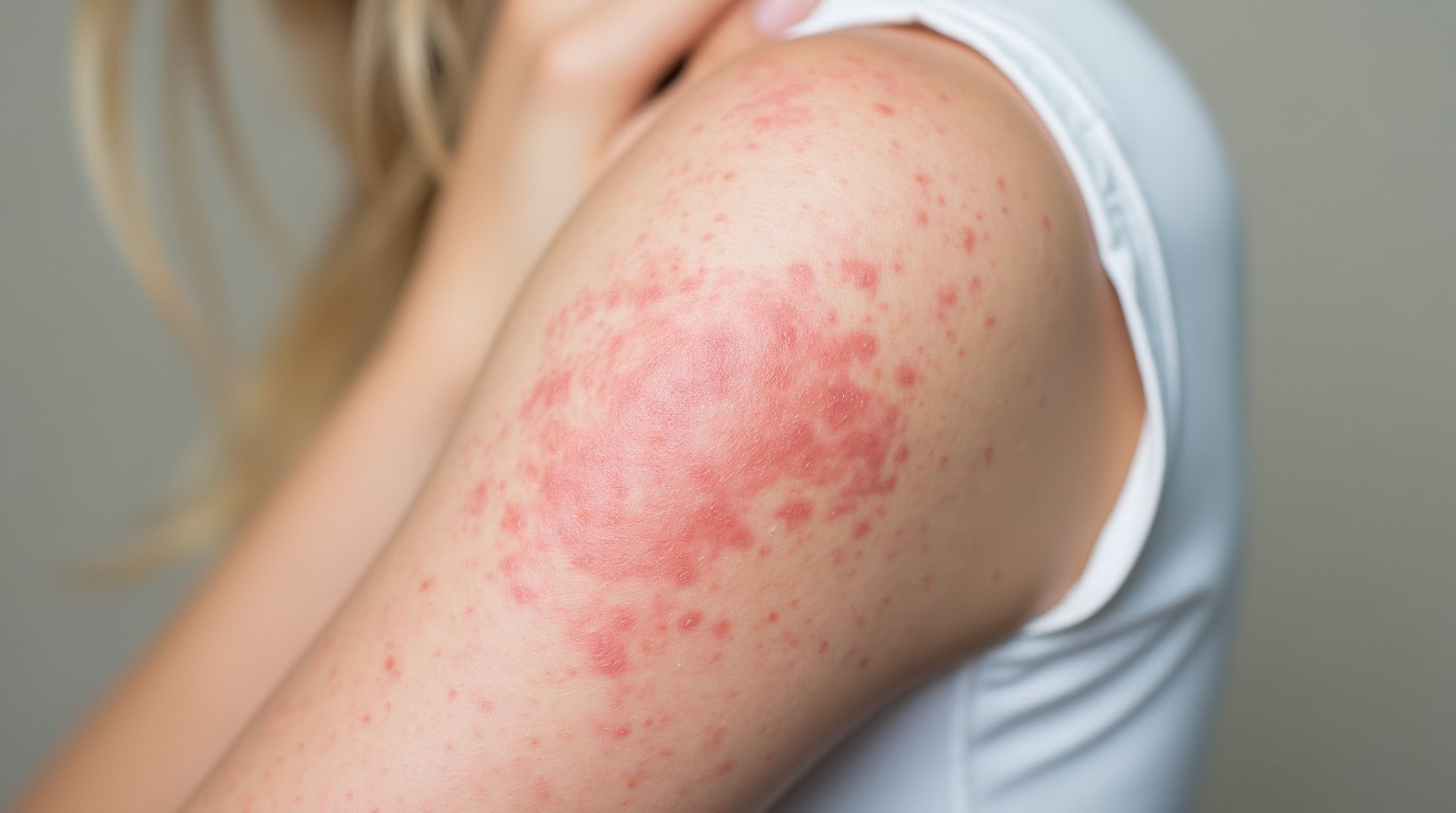- Center on Health Equity & Access
- Clinical
- Health Care Cost
- Health Care Delivery
- Insurance
- Policy
- Technology
- Value-Based Care
Urticaria Diagnosis Challenged by Overlapping Pruritic Skin Conditions
Urticaria is complicated to diagnose by its symptomatic overlap with other skin conditions and the frequent misclassification in literature of distinct pathologies like vasculitic urticaria and bullous pemphigus.
Urticaria is complicated to diagnose by its symptomatic overlap with other skin conditions and the frequent misclassification in literature of distinct pathologies like vasculitic urticaria and bullous pemphigus. | Image Credit: Alex Pios - stock.adobe.com

Diagnosing urticaria can be a frustrating puzzle for both patients and clinicians, as this mast cell–driven allergic skin condition often mimics other pruritic diseases, hindering clear epidemiological understanding, according to a recent review in Frontiers in Allergy.1
Urticaria affects both children and adults, with acute forms more frequent in children. Chronic cases affect women more often than men at a 2:1 ratio, and global studies from 1990 to 2019 showed stable disability rates with higher incidence in women.2
Although allergy consultations typically evaluate urticaria, many patients initially seek help in emergency, dermatology, or toxicology settings, where the condition manifests as itchy hives or wheals with surrounding redness and can indicate other underlying pathologies like infections, drug reactions, or anaphylaxis.1
Notably, the literature on urticaria includes many pathologies that do not meet its diagnostic criteria, such as vasculitic urticaria, erythema multiforme, urticaria pigmentosa, papular urticaria, erythema marginatum, autoinflammatory syndrome, urticarial dermatitis, and bullous pemphigus.
Vasculitic urticaria, a rare condition often associated with autoimmune phenomena, presents with recurrent skin lesions resembling chronic urticaria but persisting beyond 24 hours. The US reported an incidence of 0.5 cases per 100,000 persons/year, with 12% of leukocytoclastic vasculitis cases attributed to it. Although its etiology remains unidentified, factors like medications, infections, autoimmune diseases, malignancy, complement deficiency, and IgG4 deficiency are implicated, while antihistamines, oral corticosteroids, and omalizumab are the most common treatments.
Erythema multiforme, an often benign, short-term, self-limiting acute inflammatory disease of the skin and mucous membranes that tends to recur, presents with erythematous raised lesions featuring central flattening and blister formation. Papules can enlarge to adopt the characteristic target shape of erythema multiforme, and epidermal necrosis may develop centrally, with infectious conditions like herpes simplex, streptococcus, coxsackie, or certain medications causing it. While no specific treatment exists, antivirals are suggested for severe cases.
Urticaria pigmentosa, a form of mastocytosis, features a clonal and pathological accumulation of mast cells in various tissues, presenting as small brown itchy spots that can become edematous and form a wheal when scratched. Papular urticaria, a chronic Th2 cell-mediated hypersensitivity reaction most common in the tropics and often linked to atopy in children, occurs as an isolated pathology or with comorbid atopic disease. Lesional reactions from scabies can increase mite sensitization by causing skin inflammation and barrier alteration, thus enhancing the immune response.
Erythema marginatum, a reactive inflammatory erythema specific to acute rheumatic fever, presents with circular, evanescent, nonpruritic erythematous rashes with serpiginous edges that spontaneously resolve and reappear. Clinicians can diagnose it based on clinical findings, hereditary angioedema, and psittacosis, and they primarily manage the condition with β-lactam antibiotics such as penicillin, amoxicillin, cephalosporins, or macrolides.
Autoinflammatory syndromes are a group of diseases featuring spontaneous, recurrent, or persistent episodes of multisystem inflammation, fever, or urticaria, often resulting from alterations in innate immunity that dysregulate the immune system and cause abnormal inflammatory activity. Treatment for these syndromes may involve biologic agents like IL-1 inhibitors or TNF-α inhibitors.
Urticarial dermatitis, a rarely used term, labels a subset of dermal hypersensitivity reactions. It does not limit itself to a specific entity, but eczema and drug reactions most frequently appear as clinical associations. Clinicians describe urticarial dermatitis as a combination of urticaria and dermatitis features. Similarly, protein contact dermatitis comprises cutaneous hypersensitivity reactions that follow chronic and recurrent exposure or chronic irritation to animal or plant proteins, including occupational contact dermatitis, a common and almost always irritating disease.
Bullous pemphigus, a spectrum of rare mucocutaneous blistering diseases, originates from autoimmune processes. The disease typically presents severely in infants, with blisters occurring on the hands and feet in all cases. Overall, the prognosis of the disease is favorable.
The accurate diagnosis and effective management of urticaria require careful clinical evaluation to distinguish it from a spectrum of other conditions that share similar skin manifestations. Recognizing the nuances of these mimicker dermatoses is crucial for guiding appropriate treatment strategies and improving patient outcomes in this complex field of allergic and immunological skin disorders.
References
1. Rojo-Gutierrez MI, Moncayo-Coello CV, Macias Weinmann A, et al. Urticaria and other mimickers of urticaria. Front Allergy. 2025;5:1522749. doi:10.3389/falgy.2024.1522749
2. Liu X, Cao Y, Wang W. Burden of and trends in urticaria globally, regionally, and nationally from 1990 to 2019: systematic analysis. JMIR Public Health Surveill. 2023;9:e50114-e50114. doi:10.2196/50114
